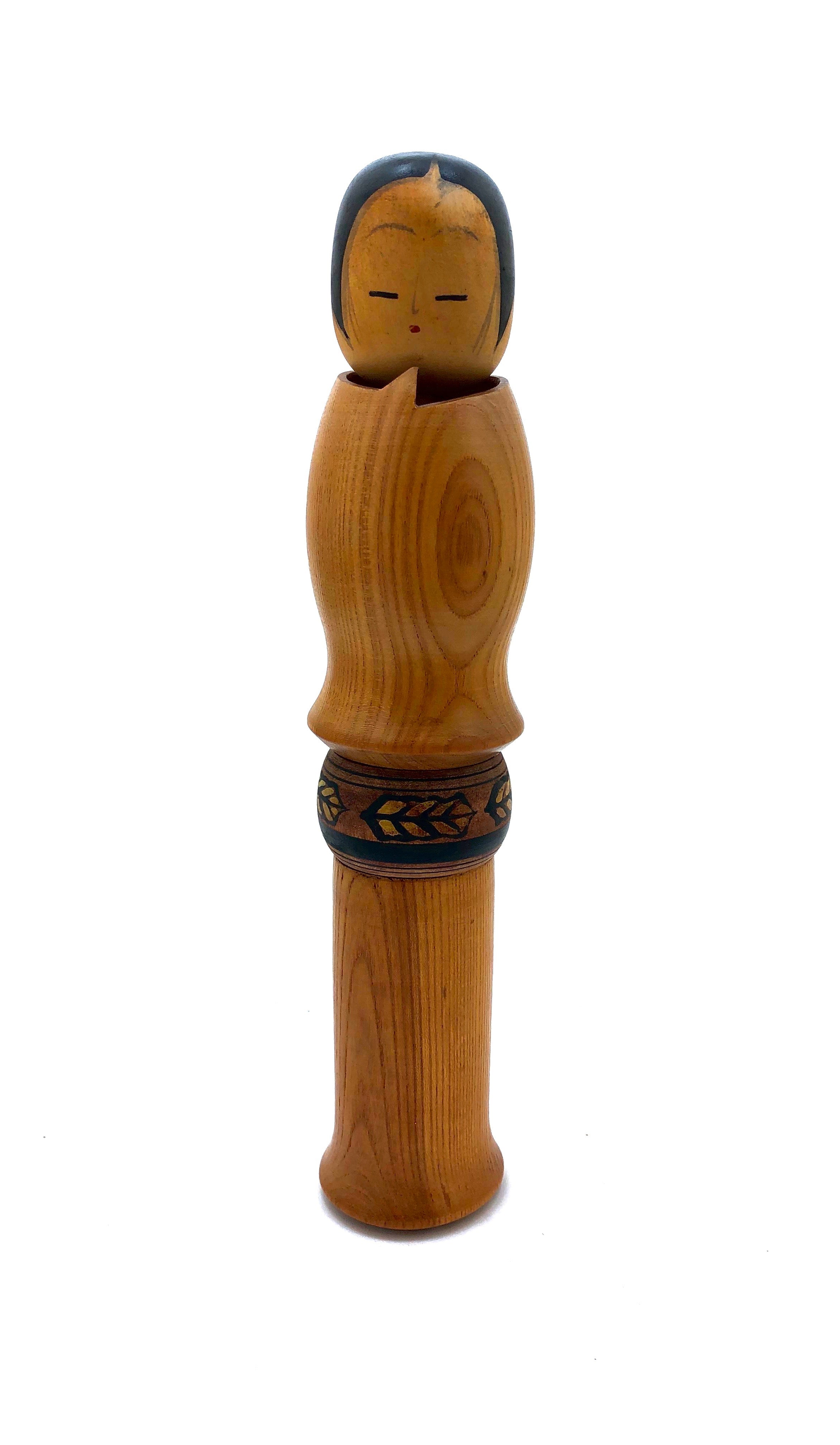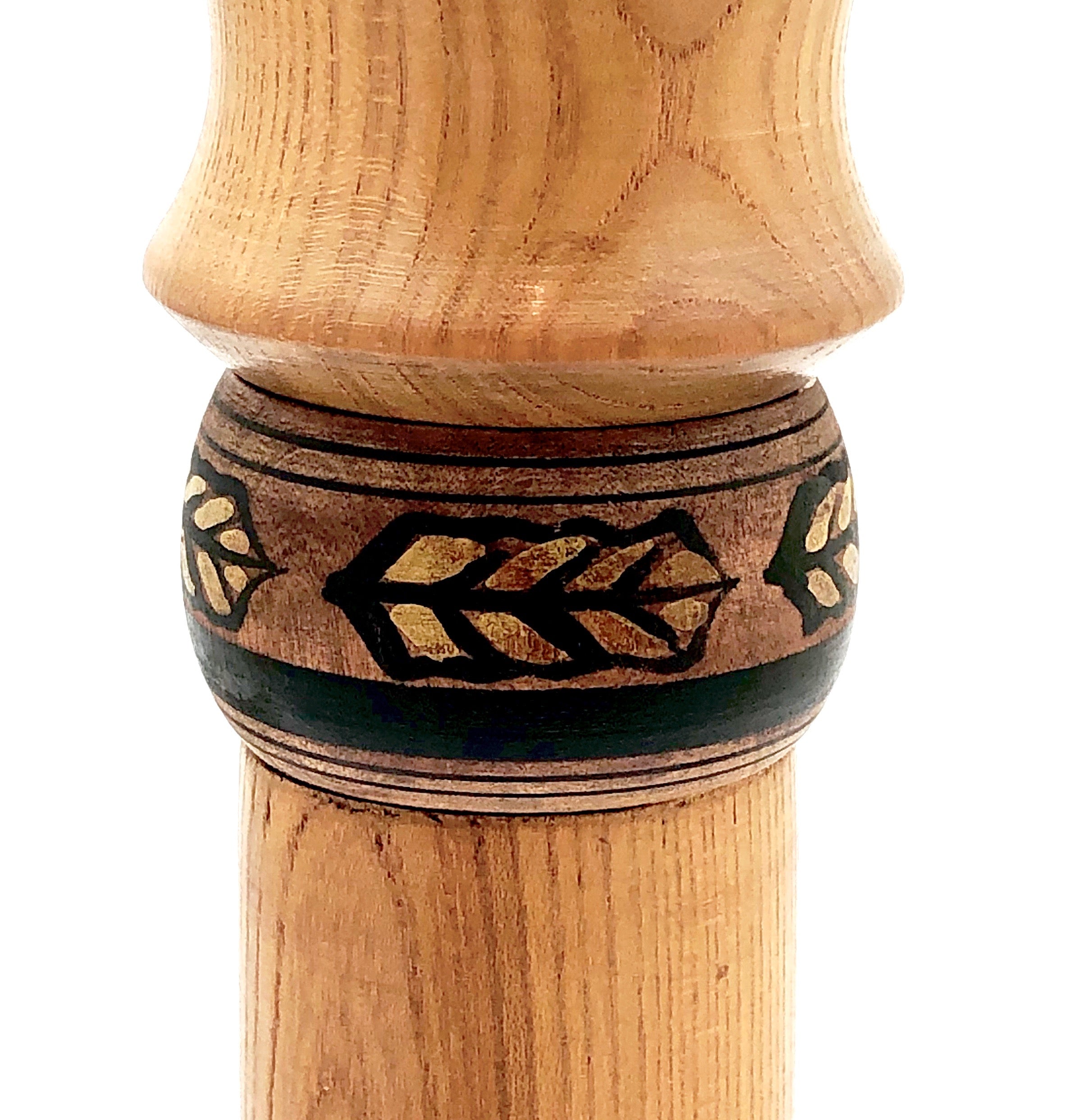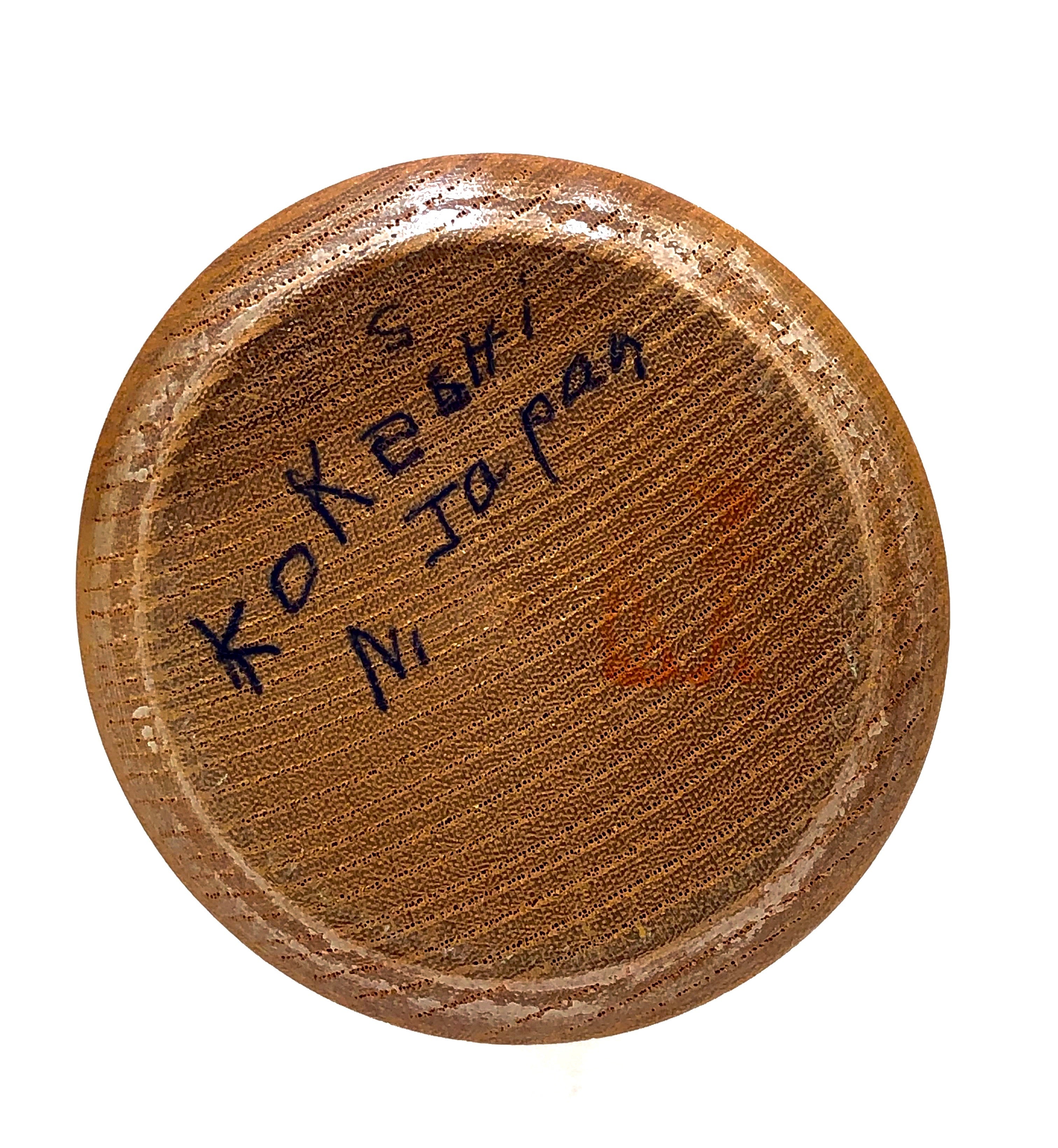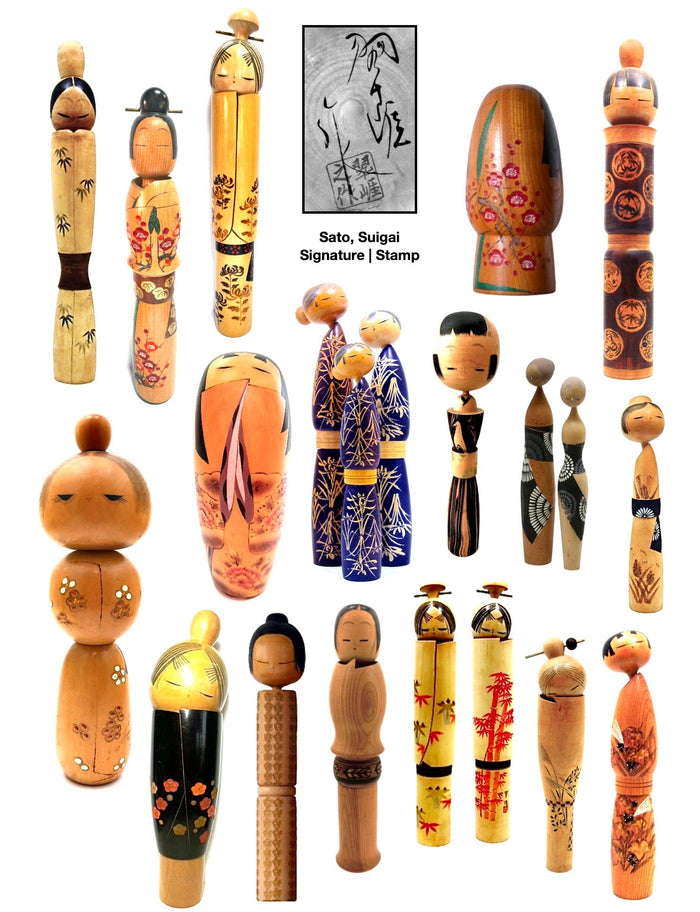



Japanese Vintage Sosaku Kokeshi by Sato, Suigai | Title: Autumn Wind
Dimensions: 12-1/4”h x 2-1/2”dia.
This beautiful Kokeshi exhibits both traditional elements such as the line work defining the peaceful females face and hairstyle. Seen are contemporary elements such as the handling of the wheat motif, commonly found in wheat fields that fill the countryside. This motif is framed with black lines, (Rokuro Moyo) on a darker stained ash to define the decorative Obi. He utilizes an uncolored, natural ash wood, (Kaibin) with refined lathe turning to define the various element of the head, the top of the Kimono, and the three sections of the body, all made from the same piece of wood. Sato-san created a simple and wonderful form that defines this three-dimensional figure, and employs color only to define the textured hair, her small lips, and the Obi allowing each element to add a decorative element to the overall figure. The bottom of the doll shows the remnants of a faded red stamp which was regularly used to identify the artist with the notation “Kokeshi ni Japan”, in graphite, (see a stamp impression included in the images which most likely represents the original standard impression found on his dolls).
Condition: Remarkable, original condition with no cracking, fading except for some gentle wear from handling and no repairs. Beautifully preserved and commensurate with age.
NOTE: SATO, SUIGAI
Sato-san, also known as Sadahachi, was born in Okubo, Yoshioka Village, Gunma Prefecture in 1920, to a family who owned a silk trading business. At the age of 18, he began his professional career as a painter under famous artist Komuro, Suiun, before pursuing a career in creative Kokeshi making in 1948. Sato-san also pursued careers in fashion design, engineering, and mechanics. His Kokeshi dolls have won many awards, including the Prime Minister’s Award in 1966. In 1970, Sato-san’s artistry was recognized by Japan’s Imperial Family, Crown Prince Akihito, (Now Emperor Akihito), the Minister of Economy and Trade, and the Minister of Agriculture and Forestry.

Artisan
Woodworker: Sato, Suigai
1920-
Biographical History:
Sato-san, named Sadahachi, was born in Okubo, Yoshioka Village, Gunma Prefecture, to a family who owned a silk trading business. At the age of 18, he began his professional career as a painter under the famous artist Komuro, Suiun, before pursuing a career in creative Kokeshi making in 1946. Sato-san also pursued careers in fashion design, engineering, and mechanics. In 1970, he was recognized for his wood crafting skills and named Holder of Excellent Technique. His Kokeshi dolls have won many awards, including the Prime Minister’s Award in 1966. In 1970, Sato-san’s artistry was recognized by Japan’s Imperial Family, Crown Prince Akihito, (Now Emperor Akihito), the Minister of Economy and Trade, and the Minister of Agriculture and Forestry. He is a member of the Cultural Properties Protections Committee of Hakone.
Collector's note – descriptive qualities, standard characteristics & ornamentation styles:
What is unique to this artist’s dolls is the unusual but traditional hairstyle, the wheat, summer grass, bamboo, (symbolizing prosperity, purity, and innocence), plum blossoms, and abstract leaves. In many instances, he utilizes an uncolored wood obi on both plain and vividly colored Kimono. He additionally incorporated ‘Stilt grass’, which is most commonly found in moist areas of wetlands. He also enjoyed representing ‘Kyoho budo’, (giant mountain grapes). Occasionally he incorporated pine, plum, and bamboo, referred to as “sho-chiku-bai”. Sato-san created many wonderful simple forms. Sato-san also created several large forms decorated with the family crests, (Mon) that are very tall, made in two separate sections from the same piece of wood, and joined with a connecting dowel. He regularly captures a peaceful nature in his doll's faces, complementing the serene nature that fills the countryside.
